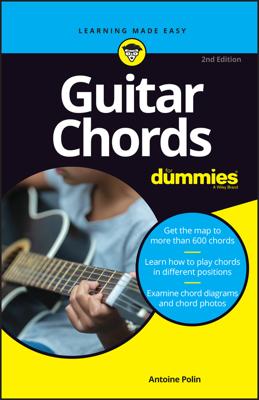After you’re familiar with the basic feel and movement of playing the major barre chords on a guitar, you want to learn how to play the minor barre chords. By learning to play the minor barre chords based on E, you can add another chord quality to your repertoire (which is a fancy French word for “bag of tricks” that musicians frequently use in discussing their music).
Forming an E-based minor barre chord is similar to forming a major barre chord. Form a barre chord starting with an open Em chord but fingering it with fingers 3-4 (instead of the normal 2-3 fingering). Next, lay your first finger across all the strings on the other side of the nut and then slide the shape up one fret, producing an Fm chord.
Although you can use typical barre approach of sliding the entire left-hand shape up (toward the body of the guitar) one fret to form the Fm barre pattern, you don’t need to go through all that. The following simple steps describe another way to approach the Fm barre chord:
Play an F major barre chord based on E major.

Remove your second finger from the 3rd string.

The first-finger barre, which is already pressing down all the strings, now frets the new note on the third string.
That's it. That’s all you need to do. You can instantly change a major barre chord to a minor barre chord by removing just one finger. You can use this approach to play any of the 12 minor chords by moving the Fm chord to the appropriate fret.
If you’re not sure whether you’re playing a barre chord on the correct fret, try alternating the chord with its open-position form, playing first the barre and then the open form (if it has one). Play the two versions in rapid succession several times. You can then hear whether the two chords are the same or different. (This is also good practice for switching quickly between chords that have no fingerings in common.)
Now try playing the simple progression shown in the following figure, which uses both major and minor barre chords. The dots above the slashes in bars 2 and 4 are called staccato marks. They tell you to cut the notes short. (Instead of playing daahh-daahh-daahh, play di-di-di.) The best way to do this is to slightly release your left-hand finger pressure right after you strum the chord. The symbols at the end of the measures 2 and 4 are called rests. Don’t play during a rest.

Now try playing the progression shown in this figure two frets higher than the figure indicates. This two-fret variation gives you a D-Bm-Gm-A progression. You’ve just transposed (changed the key of) the progression quickly and easily — through the magic of movable chords!

